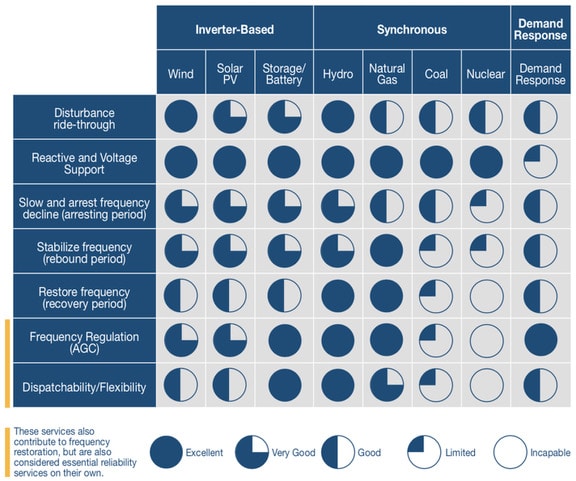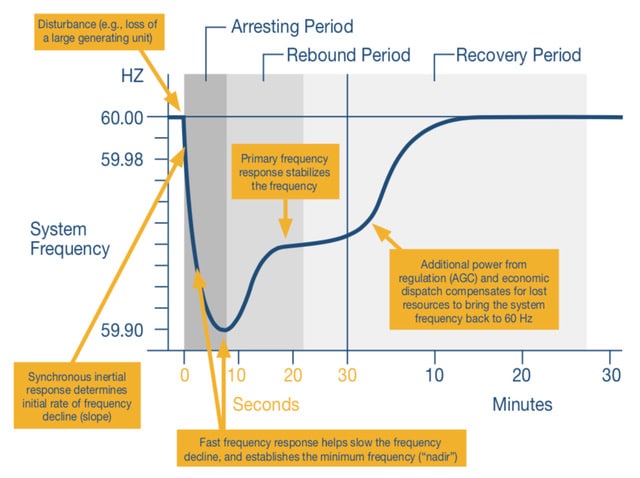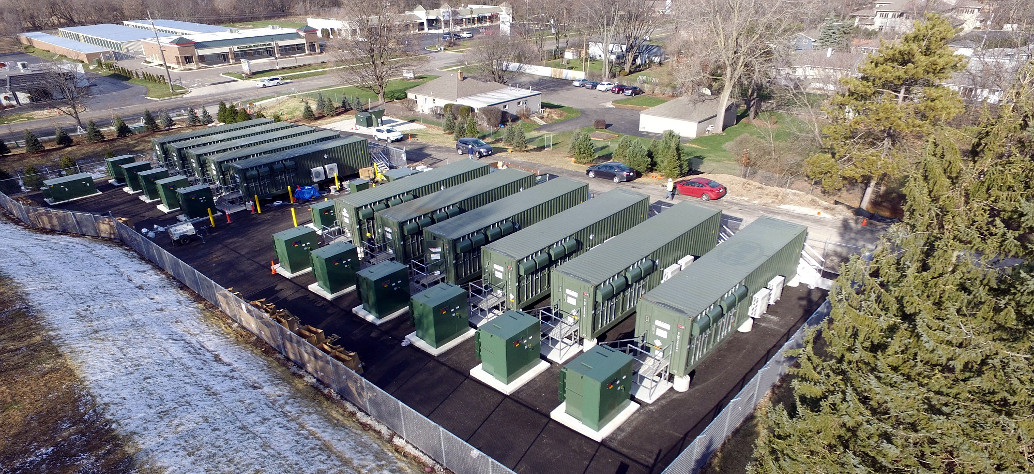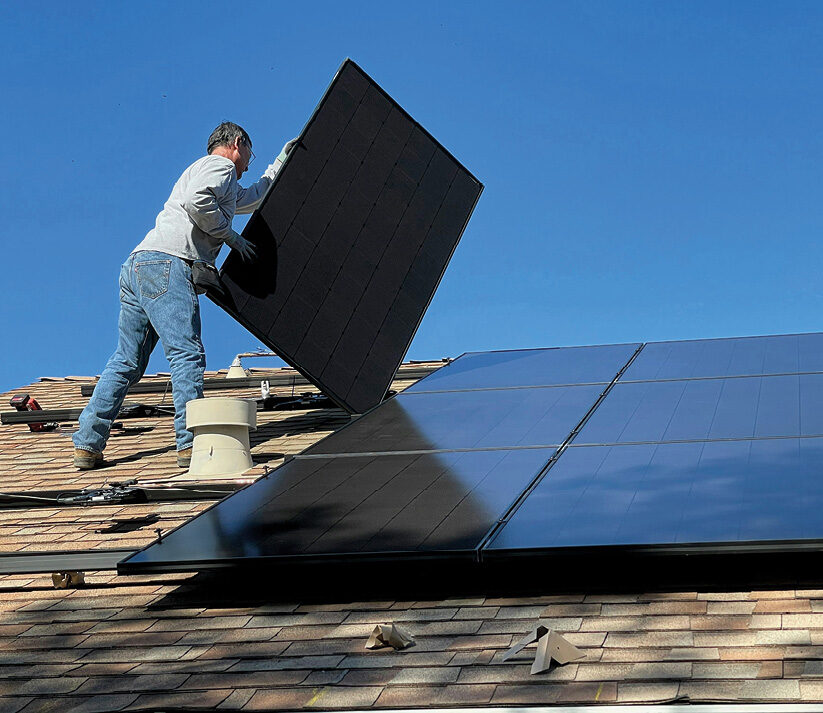Solar, wind and storage can provide all seven of a set of “essential” grid reliability services at a level ranging from good to excellent, according to grid consultant and researcher Michael Milligan, due to the capabilities of their inverters:

The table, which synthesizes previous research, considers several grid services that are essential to restoring grid frequency after a generating unit outage or other grid disruption. Other grid services shown are also essential to grid operation, as Milligan describes in a paper in The Electricity Journal that is available free of charge. Dr. Milligan presented his findings at the policy conference of the National Association of Regulatory Utility Commissioners.
Grid operators can call on distributed solar for grid services, as well as utility-scale solar, if the distributed solar can respond to signals from a utility or aggregator—a practice that could be facilitated by a recently issued standard communications profile.
Milligan defined his set of seven essential grid services primarily based on a concept paper prepared by the Electric Reliability Services Task Force of the North American Electric Reliability Corporation (NERC).
Milligan’s study builds on prior research into the grid services that solar can provide. This earlier research includes a study by First Solar, NREL, and CAISO showing solar’s capabilities in frequency control, voltage regulation, and ramping capabilities; a study sponsored by First Solar and conducted by E3 showing that operating solar in full flexibility mode enables a higher level of cost-saving solar on the grid; and a NERC report showing that frequency response has improved with more solar and wind on the grid.
Milligan explains in his journal article that inverters form the basis of the grid capabilities of solar, wind and storage: “Because the power electronics devices that couple DC to AC power offer very fast response, it is now possible to use software to control how the resource interacts with the power system, subject to physical constraints.”
To provide grid services, the article notes that solar, wind and storage must also “be in an appropriate operating state to provide services when needed” (e.g., solar must be “pre-curtailed” in order to provide ramping support), and must “have an economic incentive, and/or no economic disincentive, to provide the service.”
In other words, economic incentives are essential at this stage—regulators must provide appropriate economic incentives that enable participation by all technology types. This process has already begun; Milligan notes in his article that CAISO has adopted ramping as a market-based product, while MISO is developing a ramp capability product. He adds that “Any resource that is capable of providing a grid service should not be prevented by reliability rules or market rules from doing so.”
Dr. Milligan, who launched his consulting firm after recently retiring as a principal researcher at the National Renewable Energy Laboratory, notes that he wrote the journal article because “There is no widespread understanding of the grid services that can be provided by alternative resource types. In some cases, there were unfounded claims that traditional resources could provide all of the required ERS [essential reliability services] and that new resources cannot.”
Dr. Milligan provided a graph showing how four of the grid services related to frequency work in sequence to restore grid frequency after a grid disruption. As the graph shows, “fast frequency response” kicks in during the first several seconds, slowing the rate of frequency decline and establishing the low point. Within about 20 seconds, “primary response” stabilizes the frequency. Additional power then comes online over a period of minutes to restore normal system frequency.

Image: Milligan Grid Solutions
This content is protected by copyright and may not be reused. If you want to cooperate with us and would like to reuse some of our content, please contact: editors@pv-magazine.com.








Excellent article. Very educational.
Good morning,
I live in the Bahamas and think that that is a fantastic idea. I have been looking fo some no ideas that we can put to use in the islands. I would very much appreciate it if you can send me any info that you feel can assist.
Thank you
~Dwain Wilkinson~
Dwain: You may want to look into the Solar Head of State initiative, which is focused on renewable energy for small island nations.
satisfactory
I noticed that the table given in this article has several assumptions that boost solar/PV and burden nuclear. As a few examples, nuclear looks terrible if you assume it can only operate as baseload at 100% load. In actuality, all modern nuclear plants can operate in load-following modes at a small increase in fuel costs, giving abilities similar to hydro. Conversely, wind and, solar/PV are rated good for dispatchability. How do you dispactch solar at night and wind on a calm day?
I like to say that with the right assumptions, you can prove anything.
While the claim that nuclear plants can operate in load-following mode is technically true, in practice the wear from ramping and the extremely high-CAPEX nature of nuclear make this impractical. This is why you don’t see nuclear plants ramping much in the United States, and why such plants will accept negative electricity prices instead of ramping.
Nuclear power is the least flexible of conventional generation sources in practice.
https://pv-magazine-usa.com/2017/09/06/solar-and-nukes/